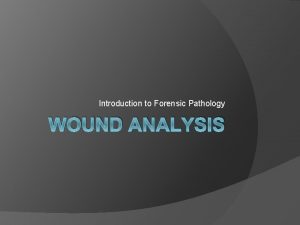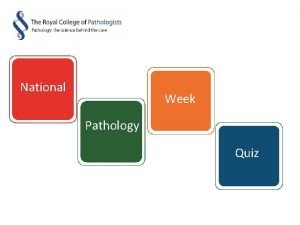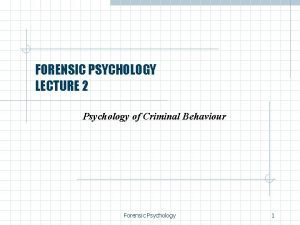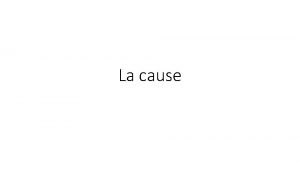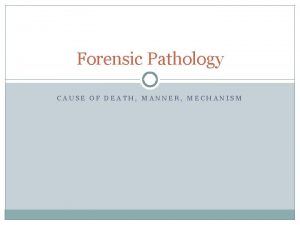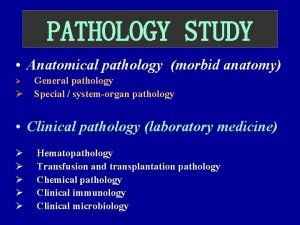Forensic Pathology Lecture 1 Forensic Pathology Determine cause








- Slides: 8

Forensic Pathology Lecture 1

Forensic Pathology • Determine cause and manner of death (autopsy/ postmortem examination)

2 types of Autopsies Forensic Autopsy • Performed by a medical examiner (usually a forensic pathologist) • Does not require family consent • Performed in the following circumstances – Sudden, unexpected death – Violent death – Unattended or suspicious death • • Medical Autopsy Performed by a pathologist Requires a families consent Determine the extend of the disease / effects of therapy The presence of any undiagnosed disease – Fewer than 12% of “regular” deaths are autopsied

Role of Forensic Pathologist Medical doctors who perform autopsies and investigate: • Cause of death- the reason person died – ex: shooting, heart attack • Mechanism of death- actual change in the body that leads to death (biology) – Ex: blood loss (exsanguination), asphyxia (lack of oxygen), sepsis (infection)

• Manner of death- five categories – Natural (most common) – Homicide – Suicide – Accidental – Unknown • Time of Death • Identity of victim

Cause, Mechanism and Manner Examples Case Study 1 – A person is found dead after a shooting at a local park. The victim was found with a gunshot wound to the chest lying in a puddle of blood. Cause: Mechanism: Manner:

Case Study 2 – A victim died of massive trauma after her car skidded off an icy road into a tree. The accident crushed the victim’s lungs and caused her to stop breathing. Cause: Mechanism: Manner:

Case Study 3: – A victim is found lying face down in their own vomit. The victim’s toxicology screen shows that the person had an excessive amount of drugs in his system but no needle marks are present on the person’s body. Cause: Mechanism: Manner:

